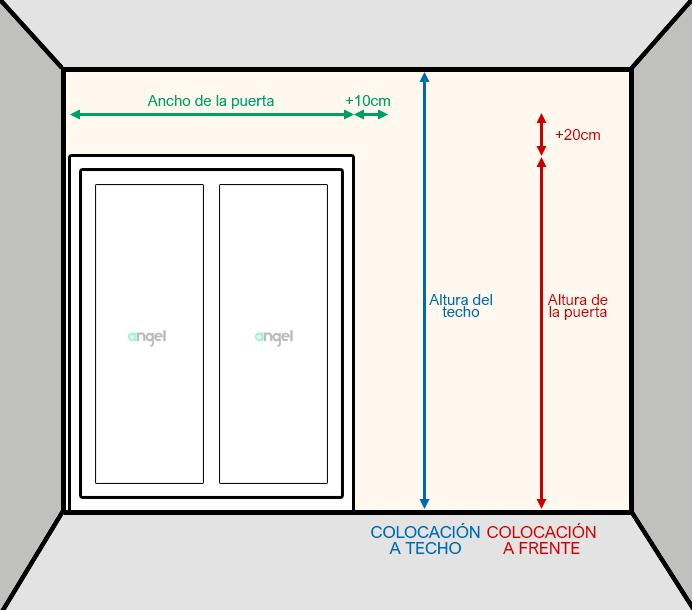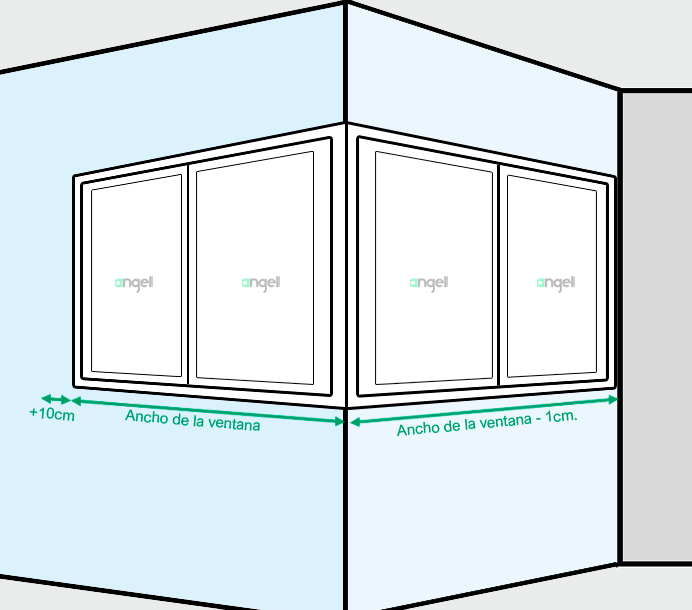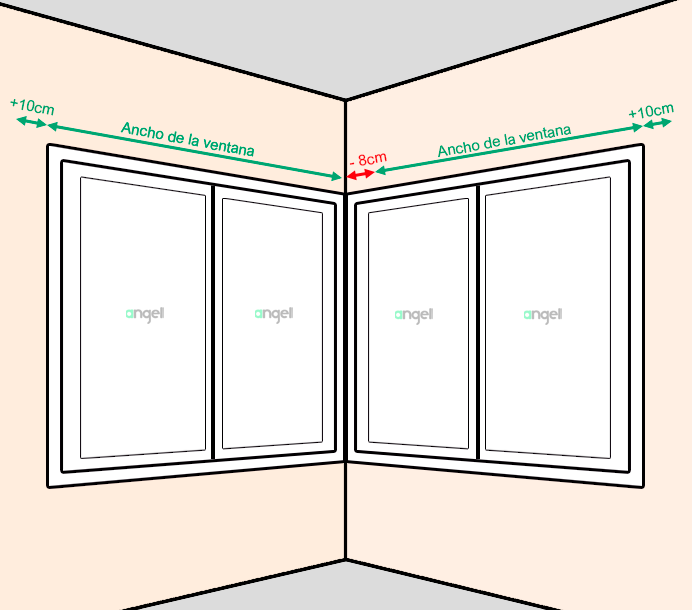How to measure doors and windows
to place a blind.
With this small guide, we want to help you in the process of measuring your doors and windows. However, we remind you that we are at your disposal to carry out the measurements at home, so we will ensure that nothing goes wrong and that the final product is perfect.
-

Ceiling or front placement
There are two ways to place a blind: On the ceiling or on the wall. The choice can be a simple aesthetic question but it can also be conditioned by the existence of obstacles that prevent placement in the desired way.
Wall installation may require larger supports or even brackets, if the fabric has to be separated from the wall a lot. -

Winding direction
Roller blinds can also be placed in two ways: With normal rolling direction (from behind) or with opposite rolling direction (from front). If there is no obstacle that prevents it, the ideal is to use the normal rolling direction, since the fabric remains closer to the window and thus improves protection against the sun's rays, while at the same time taking up less space in the room.

Measurements:
Doors
- If the blind is placed on the ceiling, its height will be the height from the floor to the ceiling.
- If the blind is placed on the wall, its height will be the sum of the height of the door, plus 20 cm.
- The width of the blind is the sum of the width of the door, plus 20 cm. extra (10 cm on each side).

Measurements:
Corner doors
- If the blind is placed on the ceiling, its height will be the height from the floor to the ceiling.
- If the blind is placed on the wall, its height will be the sum of the height of the door, plus 20 cm.
- The width of the blind is the sum of the width of the door, plus 10 cm. extra on the free side.

Measurements:
Windows
- If the blind is placed on the ceiling, its height will be the height of the window, plus the height from the window to the ceiling, plus 5 cm. extra at the bottom.
- If the blind is placed on the wall, its height will be the height of the window, plus 20cm. extra at the top, plus 5 cm. extra at the bottom.
- The width of the blind is the sum of the width of the window plus 20 cm. extra (10 cm on each side).

Measurements:
Corner windows
- To measure the height, we will use the same instructions for a normal window.
- If the window has a free side, the width of the blind is the sum of the width of the window, plus 10 cm. extra on the free side.
- If the window does not have a free side, the width of the blind is the result of subtracting 1 cm. to the width of the window.

Measurements:
Corner windows
- To measure the height, we will use the same instructions for a normal window.
- In one of the windows, the width of the blind is the sum of the width of the window, plus 10 cm. extra on the free side.
- In the other window, the width of the blind is the result of subtracting 8cm. to the width of the window and add 10 cm. extra on the free side.
-
Plant view
In the plan view, as if we were seeing the blinds from above, we can see the overlap of the two blinds, which requires cutting one of them by 8cm.
-

Remember that if you wish, we can carry out the measurements. You just have to fill out this form:




